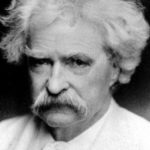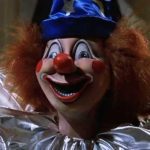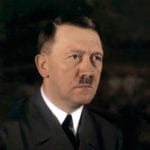 Technology
Technology  Technology
Technology  Humans
Humans 10 Everyday Human Behaviors That Are Actually Survival Instincts
 Animals
Animals 10 Animals That Humiliated and Harmed Historical Leaders
 History
History 10 Most Influential Protests in Modern History
 Creepy
Creepy 10 More Representations of Death from Myth, Legend, and Folktale
 Technology
Technology 10 Scientific Breakthroughs of 2025 That’ll Change Everything
 Our World
Our World 10 Ways Icelandic Culture Makes Other Countries Look Boring
 Misconceptions
Misconceptions 10 Common Misconceptions About the Victorian Era
 Mysteries
Mysteries 10 Strange Unexplained Mysteries of 2025
 Miscellaneous
Miscellaneous 10 of History’s Most Bell-Ringing Finishing Moves
 Technology
Technology Top 10 Everyday Tech Buzzwords That Hide a Darker Past
 Humans
Humans 10 Everyday Human Behaviors That Are Actually Survival Instincts
 Animals
Animals 10 Animals That Humiliated and Harmed Historical Leaders
Who's Behind Listverse?

Jamie Frater
Head Editor
Jamie founded Listverse due to an insatiable desire to share fascinating, obscure, and bizarre facts. He has been a guest speaker on numerous national radio and television stations and is a five time published author.
More About Us History
History 10 Most Influential Protests in Modern History
 Creepy
Creepy 10 More Representations of Death from Myth, Legend, and Folktale
 Technology
Technology 10 Scientific Breakthroughs of 2025 That’ll Change Everything
 Our World
Our World 10 Ways Icelandic Culture Makes Other Countries Look Boring
 Misconceptions
Misconceptions 10 Common Misconceptions About the Victorian Era
 Mysteries
Mysteries 10 Strange Unexplained Mysteries of 2025
 Miscellaneous
Miscellaneous 10 of History’s Most Bell-Ringing Finishing Moves
10 Creative Takes on Famous People Playing Themselves in Films
Celebrities who appear in movies as themselves may be mere walk-ons or integral to the plot and required to do something akin to acting, such as Tom Brady in 80 for Brady (2023) or LeBron James in Trainwreck (2015). Actual journalists have presented fake, scripted reports to enhance the illusion of reality in action or political films. For varying reasons, well-known people have been playing made-up versions of themselves for more than a century, before movies even learned to talk.
Related: Top 10 Amazing Actors Who Are Always In Awful Movies
10 Babe Ruth
Hall of Famer George Herman “Babe” Ruth had already notched three World Series titles with the Red Sox when he starred in Headin’ Home (1920), a corny melodrama that claimed to tell his “true” life story. Ruth was no actor, but the producers promised him $50,000, which was five times his baseball salary for the previous season. Unfortunately for Ruth, his contract proved to be no closer to the truth than the movie itself. After being paid $15,000 upfront, the check he received for the balance bounced.
Ruth returned to the silent screen in Speedy (1928), where he bounced and complained his way through a wild cab ride to Yankee Stadium, driven by comedian Harold Lloyd playing rabid baseball fan Harold “Speedy” Swift. The director wanted to include footage of Ruth hitting a real homer, and on filming day, the Bambino obliged by parking one in the seats during his first at bat—no acting required.[1]
9 Lou Gehrig
Speedy also features a three-second cameo by Yankee teammate Lou Gehrig, who walks by the cab parked at the stadium, looks straight into the camera, and sticks out his tongue. Ten years later, Gehrig would star in Rawhide (1938), a B-grade western where his (fictional) retirement from baseball prompts him to buy a Montana ranch with his (fictional) sister. Together, they help the locals defeat a gang running a protection racket.
Given that the athlete nicknamed the Iron Horse had never previously ridden a horse, the screenwriters had the sense to tailor the script to Gehrig’s persona. For example, during a barroom fight, instead of throwing punches, he knocks out the bad guys by throwing balls from a pool table.
Gehrig was also considered for another film role: Tarzan. Edgar Rice Burroughs, the character’s creator, summed up reactions to that screen test when he sent Gehrig a telegram that read, “Having seen several pictures with you as Tarzan… I want to congratulate you on being a swell first baseman.” Thus, Gehrig’s record for consecutive movie appearances ended at two.[2]
8 Tom Harmon
University of Michigan football great Tom Harmon was a two-time All-American and the 1940 winner of the Heisman Trophy. His sports fame earned him lunch with President Franklin Roosevelt, a product endorsement for Royal Crown Cola, and a $13,500 contract to star in Harmon of Michigan (1941). Although the film’s promotion suggested it told Harmon’s life story, the movie was made only months after his graduation. After summarizing his college career with authentic game footage, the narrative ventures off into fantasyland with a tale of marriage to his college sweetheart, followed by a string of coaching jobs.
Injuries suffered during his service in the Army Air Corps made Harmon’s stint in professional football brief. But they didn’t dull his interest in films. After the war, he played himself again in Gentleman Joe Palooka (1946), Triple Threat (1948), Bonzo Goes to College (1952), and All American (1953).
His success as a sports broadcaster led to his roles as an unnamed sports broadcaster in films, including the Tracy-Hepburn classic Pat and Mike (1952). One benefit of his underwhelming screen career was meeting actress Elyse Knox, whom he married in 1944. Their son Mark, himself a stand-out quarterback for UCLA, would go on to achieve the acting stardom his father never did.[3]
7 The Beatles
Long before MTV made rock star videos available 24/7, A Hard Day’s Night (1964) gave Beatles’ fans 87 minutes of their beloved John Lennon, Paul McCartney, George Harrison, and Ringo Starr, with each playing his assigned persona: the clever one, the cute one, the shy one, the overlooked one. Shot for about $500,000 and released in the U.S. less than five months after their first appearance on The Ed Sullivan Show, this black-and-white film served up a playful version of a “typical” Beatles day, with songs, screaming fans, an imaginary grandfather, and a run-in with the law.
United Artists developed this project to exploit a gap in the Fab Four’s contract with Capitol Records, which did not include the distribution of soundtrack albums. The studio expected to make its money on sales of records rather than movie tickets, only to find itself with a screen hit as well as a chart-topper.
Fresh off this success, The Beatles returned to theaters the following year (with three times the budget) in Help! (1965), playing even more zany versions of themselves. Magical Mystery Tour (1967), a trippy escapade written and directed by The Beatles themselves for British TV, was long on music but short on plot. Lennon later characterized it as “the most expensive home movie ever made.”
To fulfill their three-picture contract with United Artists, The Beatles reluctantly allowed their names and likenesses to be used in the animated feature Yellow Submarine (1968), but their characters were voiced by others. Impressed with the finished product, they did appear in a live-action epilogue.[4]
6 Detroit Lions
When writer George Plimpton wanted to research an article for Sports Illustrated about the rigors of breaking in as a pro quarterback, he convinced the Detroit Lions to let him pretend to be a rookie trying to make the team. Two years later, the resulting memoir became the movie Paper Lion (1968), with Alan Alda in the role of Plimpton with the disclaimer: “This film is an amiable fiction… and is not intended to be a literal depiction of its author.”
However, the cast was full of members of the Lions organization, including head coach Joe Schmidt, offensive line coach Chuck Knox, wide receiver Pat Studstill, linebacker Mike Lucci, defensive back Lem Barney, quarterback Karl Sweetan, and defensive tackle/all-round tough guy Alex Karras.
Several of these Lions would later have cameos in other football-themed movies. After Karras’s playing days were over, he enjoyed a long acting career, most famously in Blazing Saddles (1974), Victor/Victoria (1982), and the TV series Webster (1983–1989).[5]
5 Howard Cosell
Love him or hate him, sportscaster Howard Cosell was a household name when he opened Woody Allen’s satire Bananas (1971) with “live-on-the-spot coverage” of the assassination of the president of a fictional Latin American country. His description mimics the cadence and vocabulary of his distinctive reporting style, even likening the unfolding events to the excitement of when Cassius Clay (later Muhammad Ali) fought Sonny Liston.
After shots are fired, Cosell works his way through the crowd to capture the last words of the loser/victim, then turns to shake the hand and congratulate the winner/new dictator. At the end of the film, Cosell returns to provide more play-by-play when the hero, Fielding Mellish, and his new bride consummate their marriage under the covers.
Cosell would pop up again for cameos on the small and big screen, including episodes of The Partridge Family (1971), The Odd Couple (1972, 1975), and The Hardy Boys/Nancy Drew Mysteries (1977), as well as Two-Minute Warning (1976) and Broadway Danny Rose (1984).[6]
4 Ed Koch
It has been said that the most dangerous place to stand is between a politician and a camera. If so, Ed Koch, mayor of New York City from 1978 to 1989, posed a particular threat. After doing a voice-over for the New York-based cop comedy Barney Miller (1978) and appearing in an episode of My Two Dads (1988), Koch made his big-screen debut among the star-studded cast of The Muppets Take Manhattan (1984) playing the modestly titled role of The Honorable Edward I. Koch.
Once freed of the demands of his day job, he had repeated acting gigs as “Ed Koch” in Married to It (1991), Eddie (1996), First Wives Club (1996), and Redirecting Eddie (2008), as well as TV appearances on episodes of Picket Fences (1993, 1995) and Sex and the City (2001).
So familiar had his face become that when director Tim Burton cast Lee Wallace, who bore a striking resemblance to Koch, as mayor of Gotham City in Batman (1989), a review in The Hollywood Reporter mistakenly identified the actor as Koch himself.[7]
3 Howard Stern
When Private Parts (1997), based on shock-jock Howard Stern’s best-selling autobiography, was filmed, who else but the self-titled King of All Media could/would have played the lead? Five days a week after broadcasting his morning show, Stern went straight to the film set, where he was surprised to learn he had to memorize lines from a script rather than improvise as he did on air.
In another adjustment from radio, the fledgling film star was critical of his appearance and asked to change a shot taken from what he considered to be his “bad side.” According to director Betty Thomas, when she told him she had no other angle to use, Stern responded by getting a nose job, which required her to do any necessary reshoots from enough distance to mask the change in his appearance.
While Stern sidekicks Robins Quivers and Fred Norris also played themselves, Luke Perry, starring at the time in the TV hit Beverly Hills, 90210, declined the opportunity to reprise his role as creator of the radio show’s Fartman character, out of concern that the movie would be bad.[8]
2 John Malkovich
Screenwriter Charlie Kaufman took a big gamble in pitching a film dependent on the casting of a specific actor with no plan for Actor B, but he managed to pull it off. Being John Malkovich (1999) is a surreal comedy about a struggling puppeteer who stumbles upon a hidden portal into the mind of the movie star. He first sells the 15-minute experience to strangers, then uses it himself, long-term, to make Malkovich his own, flesh-and-blood marionette.
Initially, Malkovich loved the script and offered to help produce the film, but, surprisingly, thought someone else might be better suited to star. After John Gavin Malkovich finally agreed to play the fictional “John Horatio Malkovich,” he claimed to approach the role as he would any other, developing a character with a unique personality whose only similarity to himself was the wardrobe.[9]
1 Neil Patrick Harris
Neil Patrick Harris first learned of his role in Harold & Kumar Go to White Castle (2004) when a friend told him about a bizarre version of Harris in a film for which the friend had just auditioned. Out of curiosity and concern about who might play “him,” Harris had his agent follow up.
When he finally read the script, he thought it was funny and felt “flattered” to be included. The story’s version of Harris as a foul-mouthed, sex-obsessed, druggy hitchhiker picked up by the title characters could not have been farther from the role in Doogie Howser, MD (1989–1993) that made him a TV star while still in his teens. The movie played off that contrast to the point of having Harold question whether his car had just been stolen by Doogie Howser.
Although Harris noted in an interview with film journalist Dave Karger that “I worry that Neil Patrick Harris playing ‘Neil Patrick Harris’ jumps the shark in theory,” that did not stop him from reprising the insanity twice. In Harold & Kumar Escape from Guantanamo Bay (2008), Harris’s alter ego ups the madness when he swallows shrooms to hide evidence at a roadblock and experiences a hallucination involving rainbows and a unicorn. A Very Harold & Kumar Christmas (2011) finds Harris singing and dancing his way through an equally bizarre medley of holiday songs, complete with a red tuxedo, red top hat, and candy-striped cane. [10]








